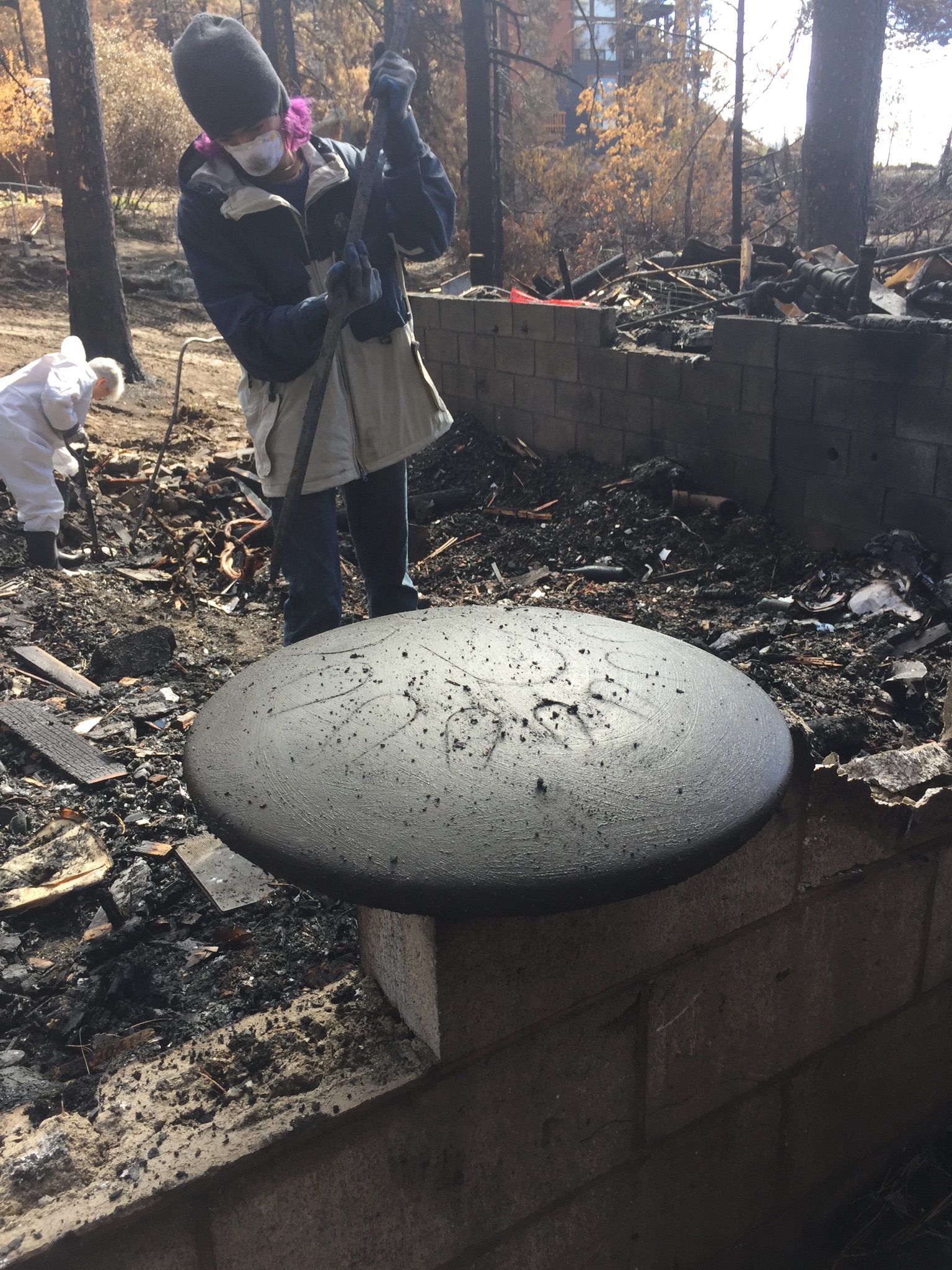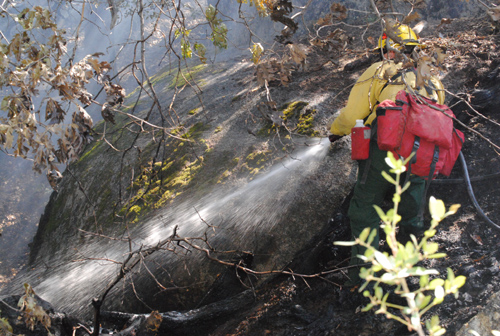What victims can teach us after the fire
Fire is reshaping the American West. Communities in Wildfire Urban Interface zones, like ours, live in constant tension with a devastating force that can, in a single day, incinerate the homes and earthly possessions of neighborhoods and even towns.
The stories of the big fires that have captured the attention of the world, names like August and Dixie, Tubbs and Camp, dwarf our experience here, but with the Cranston Fire we had an example in microcosm of the forces, physical, legal and economic, that govern these disasters and the recovery from them. The homeowners who lost homes here are few in number, but their losses were just as great, and their experiences cover the gamut; some are once again living in homes they love on the land they love. Some are in strained circumstances as they attempt to rebuild. Some cannot even think of rebuilding. Several have agreed to share their stories with our community.
The stories homeowners shared emphasize one thing above all: the quality of your outcome is dependent on the quality of your insurance. Further, the quality of your insurance is not guaranteed by high premiums, or an agent who was recommended, and that, perhaps above all, the policy you have may not be the policy you think you have.
Those who had “positive” outcomes (successful rebuilds) were very forthcoming in telling their stories. Those who had more negative outcomes (paying to rebuild themselves or homes not yet rebuilt) were sometimes more guarded, being still engaged in mediation or legal action with their insurers. But enough have spoken to the Town Crier “on the record” to allow reporting on the spectrum of conditions and results.
Know your policy
Jeff Garatea and Larry Fry are the owners of one of the three houses on Deerfoot Lane completely destroyed by the Cranston Fire. It is a second home, with their primary residence in Rancho Mirage.
TC: “You guys were insured, right?”
JG: “Yes, insured. In fact, ironically, a month before the fire I had talked to a contractor to make sure we had a policy that was high enough. He told me how much per square foot it would take to rebuild. He was on it. Our limits were high enough, but it’s something you need to verify every couple of years. I have nothing bad to say about our insurance company, they were fabulous.”
TC: “You are rebuilding now?”
JG: “We’re in the final stages. We’ve been under construction for a year and 10 months. That’s physical construction, that doesn’t count getting the design and permits. It took six months to get just the permit. (The county was probably the worst part.) It should all be happening in May, we’re very close.” [The interview took place earlier than May.]
TC:” What was your experience with the insurance company like?”
JG: “They couldn’t have handled it better. Our claims adjustor was out at the house while Idyllwild was still under evacuation. Nothing was left; it was like it had never been there except the chimney and the debris. The attitude of the insurance company was that it was catastrophic and their objective was to give us policy limits on everything. They would call us to ask if we needed anything, if we were OK.”
TC: “The name of the company?”
JG: “North Light, a subsidiary of Allstate. They were amazing. One thing I was dreading was dealing with the insurance company.”
TC: “Your advice to homeowners?”
JG: “Review [your insurance] regularly, every two or three years, if this inflation continues, more frequently. The appliances took nine months to get; it would have cost 30% more to order them the day they arrived. You can imagine how much more it would cost to build from scratch right now.”

PHOTO BY ANDREA BOND
Most of us are ‘underinsured’
Andrea Bond lost her house, too, and also is completing the rebuilding process.
TC: “What was your experience like dealing with your insurance company?”
AB: “Positive all around. Like most, I was underinsured. I had a new policy, three years old. I had to build smaller. One part I want to raise awareness about: We are replacing a structure from the ground up. What we don’t see is what’s under the foundation. When a contractor comes out and calculates costs, he can’t see boulders or underground water.
“There is an allowance for code upgrade in policies; I’m glad I had it. They give you a ‘bid’ or ‘time and materials estimate,’ but they have to say, ‘I can’t see underground.’ If they find unknown issues, they don’t know how much that’s going to cost. The homeowner is thinking they are inside their budget, but these unknown things may cost a few thousand or $50 thousand.”
Another pitfall Bond highlighted is the importance of updating the limits on your policy.
AB: “People are starting to become aware that they are insuring their home for the cost to replace it, not for its market value. Their cabin may have been built in 1960. It may be insured for $200 per square foot. The cost to rebuild now may be closer to $450 per square foot. You have to update with the actual cost of materials and labor as they go up and down, mostly up. During COVID, demand spiked costs, labor became scarce. Contractors are not as willing to do bids these days; fluctuations in prices are too much. My contractor was very keen on buying materials ahead of time when prices are lower and storing them, looking out for the client’s pocketbook.
“Maybe they insured in 1989, maybe the agent never saw the house. Decades pass, the house burns down, now they can only replace half the house. A lot of people go to mediators, asking, ‘Why did the agent not look at my house, why did they not say ‘Hey, you are up for review, it’s been five years.’’
“My company has a decent process. It’s best for everyone if we get the right data and understand the consequences of underinsuring. Maybe a smaller house, no landscaping, things you may not be able to do for a while. This year they sent me a form letter saying I might want to revisit my policy. Companies seem to be more aware … People beat up on insurance companies. We have expectations, we pay our premiums, but there is an aspect of all insurance; we have to know our coverage.”
TC: “What was the rebuilding timeline like?”
AB: “The time it takes to rebuild is different for everyone. At first, I was just trying to survive mentally and emotionally. I couldn’t even think about designing a house. It was months and months before I was able to sit down with a designer. Six months, and the clock was ticking. From that time until they were able to pour the foundation was a year and a half. It’s been four years now. I am still working on it. I moved in late January.”
Bond, like several others interviewed here, wanted to point homeowners to the nonprofit group United Policyholders. “They educate on all aspects of insurance, helping homeowners become aware about their policies, getting help in lots of arenas.” Their website, uphelp.org, is a good place for every insurance consumer to visit and get to know.
The policy you have may not be the policy you think you have
Alta Kavanaugh is not finished rebuilding her home, and her claim is still in mediation.
AK: “It has been three years since I filed a claim with the California State Insurance Commissioner’s Office so that I can have mediation with my insurance company, (State Farm.) [It provides] a mediator in cases where there is a dispute. I was underinsured and State Farm gave enough funds to build approximately ‘half of a house’ and that was with building costs of three years ago.”
Kavanaugh was working as a school teacher in Sonoma County and renting out her Deerfoot property. She had recourse to local groups there for guidance and advocacy.
AK: “Sonoma County Legal Aid offered me the services of an attorney who specializes in disasters, and she has been very helpful. It is estimated that approximately 60% of homes lost in Sonoma County … to fires were underinsured.”
She explained the process by which her property became underinsured without her being aware: “When I left my home on Deerfoot Lane to take a teaching job in Sonoma County, my cabin became a rental, I requested my policy be changed from a homeowner policy to a rental policy. I was never informed that the rental policy would have less coverage, and indeed it does. In 1984 when I purchased the cabin … I was assured by the agent that we were like ‘partners’ and that in case of disaster I would have the coverage to rebuild a similar house. Like so many people I felt confident that my insurance coverage was adequate. I never was told otherwise or contacted about increasing my coverage.
“Since the fires, I have talked to homeowners who were contacted yearly to meet with their agent for a review of coverage. Many of the plans that were available 40 years ago with complete coverage are no longer available; in the ’90s, companies began offering a variety of plans. I suggest all homeowners request a meeting rather than wait for the agent to contact them.”
Like Bond, Kavanaugh suggested “doing some research” at the United Policyholders site. “They really are ‘on your side.’… established to help the homeowner translate their coverage and … prepare in case of a disaster. When the fires struck Sonoma County they sent staff to organize and set up monthly meetings for anyone who had been affected. They did the same after the Paradise and Woolsey fires.”
Specifically, Kavanaugh advised homeowners to check their policies to see if they have “‘extended coverage,’ because that is what you will likely need to rebuild a similar home to what you have now …. My home is currently under construction, and it is going to be a challenge to complete with the cost of building materials rising so drastically. I qualified for a Small Business Disaster loan [because the house was a rental property] at a low interest rate and worry that it will not be enough. I am a 76-year-old retired school teacher, a cancer survivor whose earning days are over. I live on my pension and have my fingers crossed that State Farm will do the ‘right’ thing and help me with ‘gap’ funding to allow me to complete my home. At this point they claim they have no further responsibility. I have spent three years looking for funding to fill in the ‘gap’; applying for any possible grant I could find. FEMA funds were not available since the Cranston Fire did not qualify in size. I have not received any additional funds and mediation with my insurance company is my only option. I am hoping that State Farm will stand by their iconic slogan, ‘Like a good neighbor, State Farm is there.’”
Editor’s note: This story will be continued next week.



